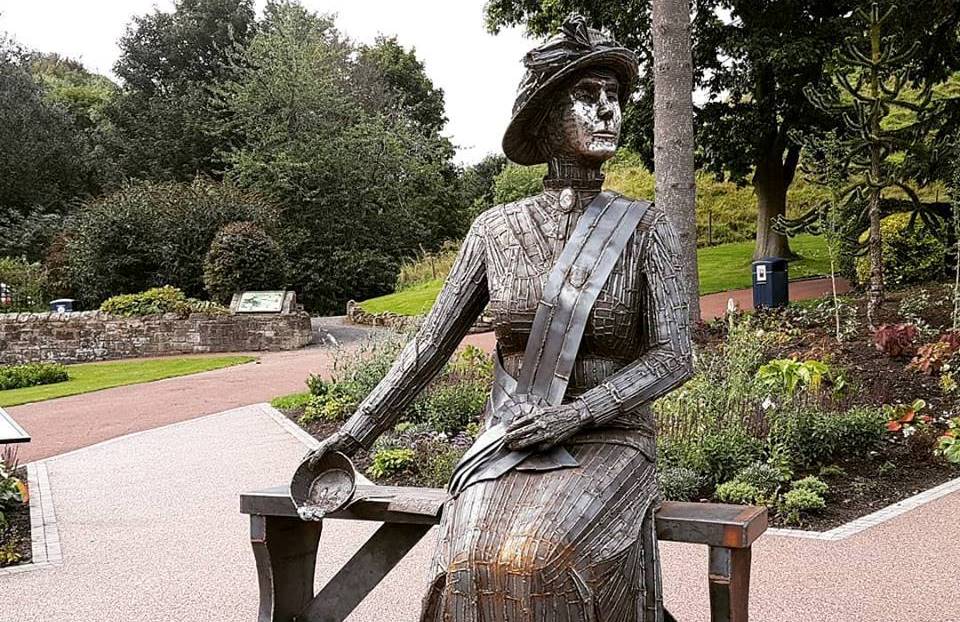Emily Wilding Davison – Suffragette

Emily Wilding Davison is buried in the churchyard of St Mary the Virgin, Morpeth in a family plot, her father having died in 1893. Her gravestone bears the WSPU slogan, “Deeds not words”.
Emily was fatally injured when she stepped on to the track during the 1913 Epsom Derby and fell under the flying hooves of King George V’s horse Anmer. A funeral was held in London on 14 June 1913 and her coffin was brought by train to Morpeth for burial on 15 June.

On 11th September 2018, a statue of Emily Wilding Davison by North East sculptor Ray Lonsdale, was unveiled by the Duchess of Northumberland in Carlisle Park in Morpeth to commemorate the centenary of the first women getting the vote in the UK.

Emily Inspires!
In 2012, Emily Inspires! was set up as part of the commemoration of the centenary of Emily Wilding Davison’s death with the explicit vision:
“to be inspired by Emily Wilding Davison, Suffragettes, Suffragists and Inspiring Women of Wit, Wisdom & Wonder throughout the ages and across the world. Emily Inspires!: Her Past, Our Present, Your Future – the voices, lives and stories of women then and now.“
For more information, contact Penni Blythe
Emily’s Life
Emily Wilding Davison was born in Blackheath in southeast London on 11 October 1872. She studied at Royal Holloway College and at Oxford University, although women were not allowed to take degrees at that time.
In 1906, she joined the Women’s Social and Political Union (WSPU), founded by Emmeline Pankhurst. Three years later she gave up her job as a teacher and went to work full-time for the suffragette movement. She was frequently arrested for acts ranging from causing a public disturbance to burning post boxes and spent a number of short periods in jail.
In 1909, she was sentenced to a month’s hard labour in Strangeways Prison in Manchester after throwing rocks at the carriage of chancellor David Lloyd George. She attempted to starve herself, and resisted force-feeding. A prison guard, angered by Davison’s blockading herself in her cell, forced a hose into the room and nearly filled it with water. Eventually, however, the door was broken down, and she was freed. She subsequently sued the wardens of Strangeways, and was awarded 40 shillings.
By 1911, Davison was becoming increasingly militant. On 4 June 1913, she ran out in front of the king’s horse as it was taking part in the Epsom Derby. Her purpose was unclear, but she was trampled on and died on 8 June from her injuries.